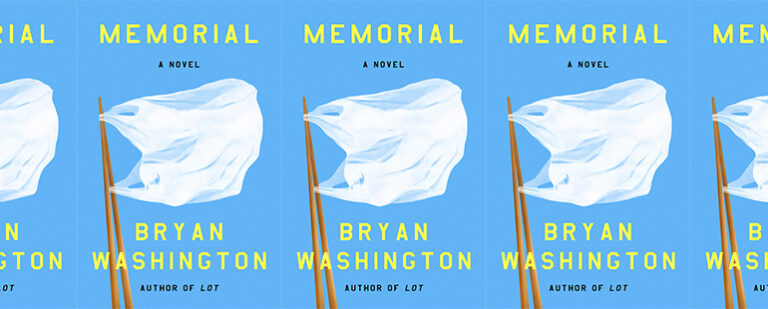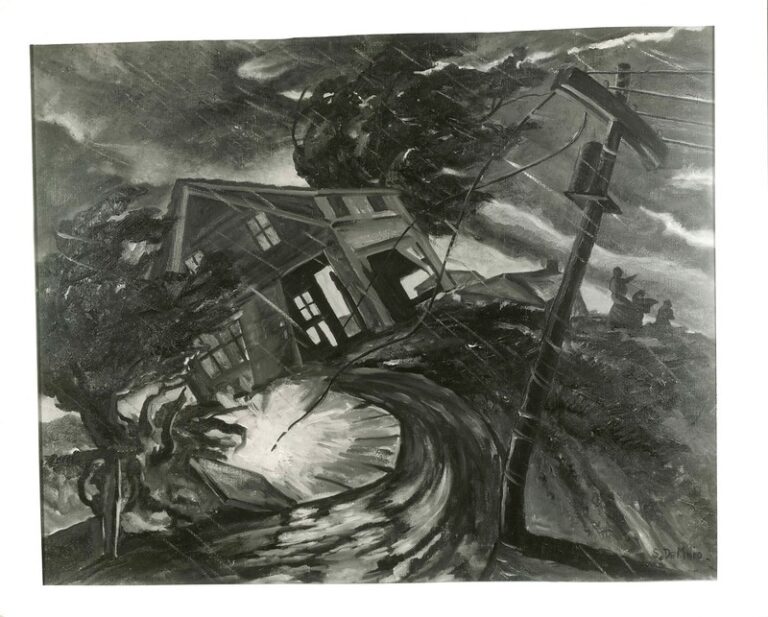Female Prisoners in Emily Brontë’s Gondal Poems
In 2018, Michael Flynn, Trump’s former National Security Advisor, entered a Washington D.C. courthouse for sentencing to the sound of a crowd screaming, “Lock him up!”—a notable ending to a story that began back in 2016 with Flynn himself leading crowds of Trump’s supporters in the same chant, only with a slight difference: “Lock her up! Lock her up!” They were referring, of course, to Hillary Clinton.
Our fascination with deposed, disgraced woman-leaders—whether real or imagined—is nothing new. This year saw the release of yet another film about sixteenth century monarchy, Mary Queen of Scots, directed by Josie Rourke. The movie opens with a shot of Mary Stuart inside a prison chapel, praying. Next, we see her, shouldered by a priest and followed by weeping ladies-in-waiting, make her way to her place of execution, and just as she kneels at the block, we cut to a teenage Mary emerging like a maritime Madonna onto Scotland’s shores years earlier—young, fresh, and full of ideas.
Rourke’s decision to begin Mary Stuart’s story at its end isn’t especially radical. Past films, historical novels, biographies, and plays often do just that. After all, Mary spent nearly eighteen years of her life imprisoned: first by oppositional factions in Scotland, then by her own cousin Elizabeth Tudor, who sanctioned her execution for crimes of conspiracy and treason. “In my end is my beginning,” wrote Mary Stuart, jailed in Fotheringhay Castle, and how right she was—in respect to her future life as tragic figure, trope, and cautionary tale. The form imprisons the subject and the subject becomes the form.
Nineteenth-century literary prodigies the Brontës had a fascination with imprisonment in general and Mary Stuart in particular—especially Emily who, with her sister Anne, created an imaginary kingdom called Gondal that had as its ruler a mercurial queen who often reflected on her life from a jail cell.
In her introduction to a collection of Brontë juvenilia titled The Brontës: Tales of Glass Town, Angria, and Gondal, Brontë scholar Christine Alexander writes, “Life in Gondal is dominated by a pervading sense of confinement, sometimes physical and sometimes spiritual, where the speaker is chained by powerful emotions, memories, and the consequences of action.”
Certainly it makes sense that even in the relative freedom of their imaginations, the Brontës’ pervading sense of imprisonment bleeds through. They were cut off from the wider world by their provincial town, raised by an unusually permissive father who surrounded them in books and ideas. They read voraciously and learned how to express themselves by making up worlds and writing poems, plays, stories, mock-newspaper articles, and pretend histories, often in a script so small the works must be read with a magnifying glass. As opposed to Charlotte’s and Branwell’s made-up African colony they named Angria, the world Emily contrived was one closer to her own reality, populated by moors and wintry weather, heather and gorse—and whose leader is decidedly woman.
Though all of the Brontë children—Charlotte, Branwell, Emily, and Anne—knew confinement intimately, Emily’s confinement expressed itself in her dynamic, propulsive poems. Her attraction to images and metaphors of imprisonment are fueled by historical precedent and romantic inclination, especially by way of “Mary, Queen of Scots, whose tragic life of suspicion, murder, lovers, imprisonment and death permeates the Gondal saga,” says Christine Alexander. Through Gondal’s Queen Almeida Augusta Geraldine (or A.G.A. for short), Emily is able to access the full-range of emotions and experiences in a rhythm her sister Charlotte called “condensed and terse, vigorous and genuine.” The vigor and authenticity Charlotte describes smacks of youthful longing—thunderous, elemental—imprisoned by formal conventions though practically bursting out of their bounds.
Emily’s Gondal poems are heavily influenced by Sir Walter Scott, Lord Byron, William Wordsworth, and Samuel Taylor Coleridge. Often, the poems’ speakers are in a state of impassioned recollection—not necessarily a refutation of Wordsworth’s dictum about “emotion recollected in tranquility,” but rather a recontextualization. After all, her characters aren’t farmers or washerwomen—they’re royal. Emotions are heightened. Stakes are raised. More often than not, they speak (or are spoken of) from a place of literal and metaphoric imprisonment, trapped by dangerous ambition and brutal political scheming worthy of the English monarchy. In a move unique among her siblings, Emily envisioned a female ruler who is at turns tender and vicious, capable—like her real-world analogues—of war and conquest and of betrayal. In other words, she is fully human.
Emily Brontë didn’t tend to title her poems but rather differentiated them by speaker, the date written, and whether she considered them part of the Gondal saga. In a poem dated October 9, 1845, A.G.A.’s childhood friend Julian encounters her in prison, remembering, “She knew me and she sighed ‘Lord Julian, can it be, / Of all my playmates, you, alone, remember me?’”
Through A.G.A., Emily wonders who would remember the power she plied as a child, the imaginative force of her creativity, and the purity of her vision. There is a privileging of childhood in this poem as well as in many others from her Gondal saga; for Emily, childhood is powerful, but she grapples, too, with the historical correlation between the passions of childhood and a woman’s purported leadership style as irrational and emotional—and therefore dangerous. A woman can’t lead her country if she is imprisoned in her woman’s body. A woman can’t lead her country if she is imprisoned by her childish mood swings or burdened by her own children. The story of Mary Stuart reminded Emily that the ship of state will always right itself after too much “hysterical” femininity, and it has no qualms about doing so violently.
In Emily’s poem, the “prisoner” (A.G.A.) is compared to a caged bird whose release for the speaker (Lord Julian) is fraught; what does he lose by her freedom, and what does he gain? Even in Emily’s narrative, the agency is with the male speaker:
Thus ruth and selfless love together striving tore
The heart all newly taught to pity and adore;
If I should break the chain I felt my bird would go
Yet I must break the chain or seal the prisoner’s woe.
A.G.A then tells Lord Julian that death is the true “liberator,” promising silence and stillness until the body reasserts itself:
‘Oh, dreadful is the check—intense the agony
When the ear begins to hear and the eye begins to see;
When the pulse begins to throb, the brain to think again,
The soul to feel the flesh and the flesh to feel the chain!’
Life, in other words, is cacophony and chaos. It is entrapment. The imagination can’t soar caged inside a body meant for child-bearing, child-rearing, and wifely-duty.
Emily Brontë herself eschewed marriage and motherhood. Some of her life choices may have, indeed, been choices, but many may just have been alternative prisons. She was famously misanthropic, grumpy and difficult, perhaps to some even unlikable, preferring the company of her dogs to people. She was intensely private yet exceedingly passionate, her passion volcanic—an image Emily Dickinson (an American analogue to Emily Brontë) often used to describe the enormity of her own poetic prowess.
In poem dated March 1, 1841, Emily writes,
And if I pray—the only prayer
That moves my lips for me
Is—‘Leave the heart that now I bear
And give me liberty’—Yes—as my swift days near their goal
‘Tis all that I implore—
Through Life and death, a chainless soul
With courage to endure!—
There is a personal yearning for escape and perseverance: a breathless, contradictory prayer for endurance and a “chainless soul,” signaling Emily’s acute awareness that she is in an existential bind.
Consider the dichotomy between Mary Stuart and Elizabeth Tudor. In so many retellings of the familiar conflict between these two women, Elizabeth plays the role of the man—autonomous and self-serving, unfettered by marriage or children—but Elizabeth is also trapped, imprisoned by England’s entrenched patriarchy and her own childlessness. Mary, on the other hand, is forced to abdicate her throne to her one-year-old son. To a young Emily Brontë, it surely appeared a zero-sum game.
I will end where I began, only with a slight difference. In Mary Queen of Scots, Mary loses her head and Elizabeth loses her heart, yes, but it’s 2019 when I leave the movie theater and drive home listening to the radio. I hear some pundit telling me that another woman has decided to run for president and the woman running for president just isn’t likable enough.


